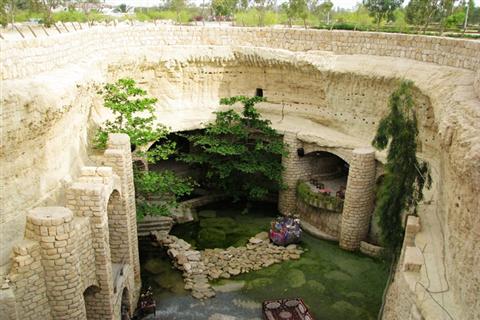坎儿井
the karez system, an irrigation system connected by underground channels, is considered as one of the three great ancient projects in china,
坎儿井系统,一个通过地下通道连接而成的灌溉系统,被认为中国古代三大工程之一,
the other two being the great wall and the grand canal.
另外两个是长城和大运河。
There are nearly one thousand karez totaling five thousand kilometers in length in turpan.
在吐鲁番有近一千个坎儿井总计五千公里长。
The structure of the karez basically consists of wells, underground channels, ground canal and small reservoirs.
坎儿井的结构基本上由竖井、地下渠道、地面渠道和小型蓄水池四部分组成。

In spring and summer, a great amount of melting snow and rainfall flow down from the bogda and karcawuquntag mountains north and west of the turpan depression into the valleys and then seep into the gobi desert,taking advantage of the mountain slopes,
在春季和夏季,吐鲁番盆地北部的博格达山和西部的喀拉乌成山上的大量积雪和雨水流下山谷,潜入戈壁滩下。
the working people ingeniously created the karez to draw the underground water to irrigate the farmland,
人们利用山的坡度,巧妙地创造了坎儿井,引地下潜流灌溉农田。
the water in the karez will not evaporate in large quantities even under the scorching heat and fierce wind,
坎儿井不因炎热、狂风而使水分大量蒸发,
hence ensuring a stable water flow and gravity irrigation.
因而流量稳定,保证了自流灌溉。
As far back as the han dynasty,the karez was recorded in shi ji(the historical records) and then called "well canal".
早在汉代,坎儿井被《史记》(史书)记录,随后被称为“井渠”。
Most of the existing karez in the turpan area were built during the qing dynasty and in after years,
吐鲁番地区现有的坎儿井大多数建于清朝及以后。
nowadays large stretches of fertile oasis land are still irrigated by karezes.
现在大片大片的肥沃的土地仍由坎儿井灌溉。
The karez in the wuxing township are open to visitors
新城西门村五星乡的坎儿井对游客开放













